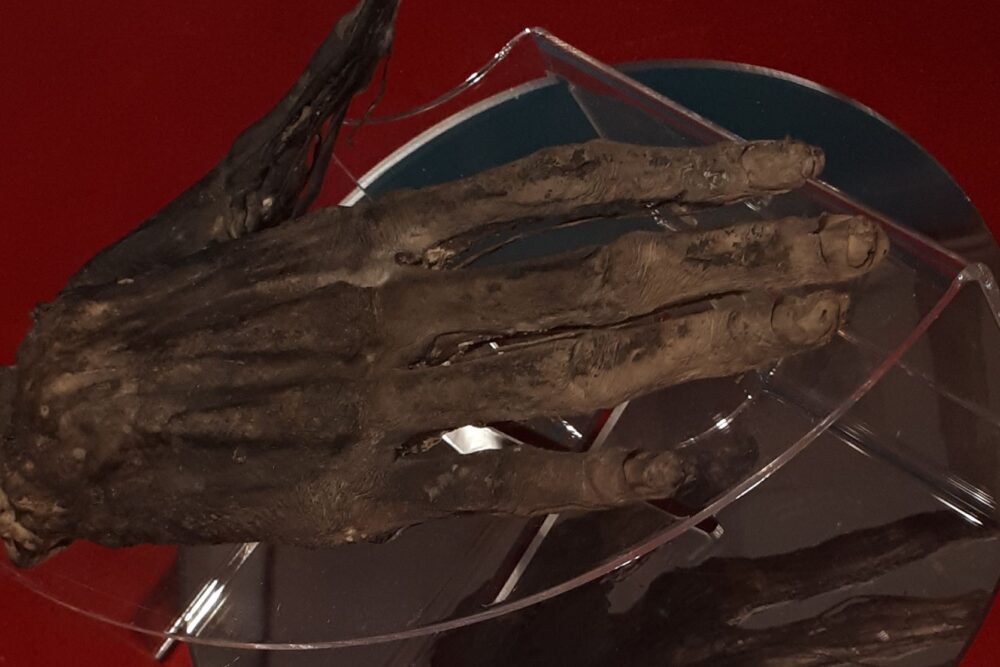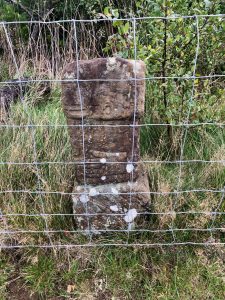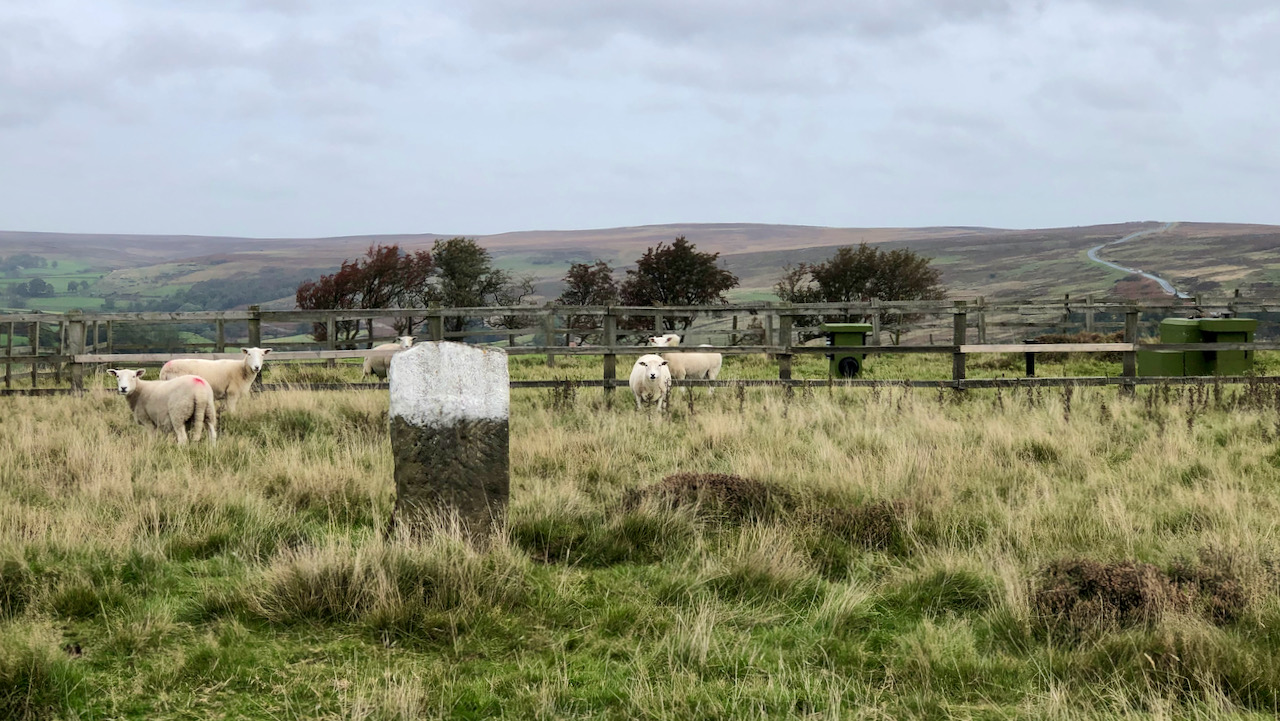
In the hallowed depths of Whitby Museum there is a grisly relic — the ‘Hand of Glory,‘ a mummified hand with a sinister past. Unearthed in the early 20th century by local historian Joseph Ford, this macabre exhibit is allegedly the preserved right hand of a criminal, amputated while still hanging from the gallows. It was rumoured that it would have been used by a burglar to plunge the occupants of a house into an unbreakable slumber.
Ford, in his book “Some Reminiscences and Folk Lore of Danby Parish and District,” spun a tale of dark nights and shadowy thieves1Ford, Joseph. “Some Reminiscences and Folk Lore of Danby Parish and District.” Page 153. Horne & Son Ltd., Whitby. 1953.. According to him, the hand was snatched from a felon swinging on a gibbet, perhaps a gibbet at Gallow Howe, a spot supposedly marked by a boundary stone inscribed with the year 1835. Yet, uncertainty looms over Ford’s claims. Gibbeting, the grisly display of criminals’ corpses, was fading into history by 1835, and no concrete proof ties this stone to such gruesome events.
Ford’s vivid imagination weaves a narrative of clandestine theft under the moon’s obscured gaze. The thief would have his eyes on that dead criminal’s right hand, quickly lopping it off the swinging body hanging from the gibbet. The only witnesses to this strange theft would’ve been the owls, the birds of darkness. He would make off with his coveted prize, which, with some hocus-pocus, would become the Hand of Glory, a dreaded charm amongst the folks in the dales.
So in 1835, a gibbet may well have still stood on Gallow Howe in the last throes of decay, or people might still have some folk memory about one, but Ford himself admits there’s no proof of any hangings at that spot. All he’s got is the name “Gallow Howe.”

Gibbets were mainly used for traitors, murderers, and highwaymen, and erected next to public roads and crossroads to send a message to potential wrongdoers. But this boundary stone isn’t particularly near either, though modern roads might not follow the same routes as the old ones. Ford thinks there’s an old guidepost nearby, on the road leading to Westerdale. He figures the gibbet wasn’t too far from where the roads to Whitby, Stokesley, and Kirbymoorside met back in the day. I found one such guidepost, but who’s to say it’s still in its original place?2NYM NP HER No: 6654 Another’s marked on a map from 1856, but it’s on the other side of the road. Both are not exactly adjacent to the Gallow Howe boundary stone.
Now, ‘howe’ means an “artificial burial mound,” tracing back to the Old Norse word for “mound” or “cairn.” Just about 90 metres away, to the east-southeast, and across the Rosedale road, there’s a round cairn that goes by the name Gallow Howe3NYM NP HER No: 35044Gallow Howe’. Heritagegateway.org.uk <https://www.heritagegateway.org.uk/Gateway/Results_Single.aspx?uid=cc12abcb-10b6-400e-b71c-6c853d5e5c71&resourceID=19191> [accessed 18 October 2023]. It’s smack in the middle of a field of smaller cairns, at least nine of them, now grassed over. They reckon it’s a leftover from a prehistoric system of fields that once covered a lot of Castleton Rigg. Maybe that tumulus is the real spot where Danby’s gibbet used to stand. It’s certainly closer to the road.
By the way, in the photo, right behind the boundary stone, you’ll spot a Royal Observer Corps monitoring post5‘Royal Observer Corps monitoring post’. Heritagegateway.org.uk <https://www.heritagegateway.org.uk/Gateway/Results_Single.aspx?uid=dfa7b65d-000c-4aac-96cd-ebcb58aaade6&resourceID=19191> [accessed 18 October 2023]. It was put there to keep an eye out for enemy aircraft and nuclear attacks. It was operational between 1959 and 1991, and now it’s been renovated and is open to the public a few times each year. Quite a mix of history.
- 1Ford, Joseph. “Some Reminiscences and Folk Lore of Danby Parish and District.” Page 153. Horne & Son Ltd., Whitby. 1953.
- 2NYM NP HER No: 6654
- 3NYM NP HER No: 3504
- 4Gallow Howe’. Heritagegateway.org.uk <https://www.heritagegateway.org.uk/Gateway/Results_Single.aspx?uid=cc12abcb-10b6-400e-b71c-6c853d5e5c71&resourceID=19191> [accessed 18 October 2023]
- 5‘Royal Observer Corps monitoring post’. Heritagegateway.org.uk <https://www.heritagegateway.org.uk/Gateway/Results_Single.aspx?uid=dfa7b65d-000c-4aac-96cd-ebcb58aaade6&resourceID=19191> [accessed 18 October 2023]

Leave a Reply